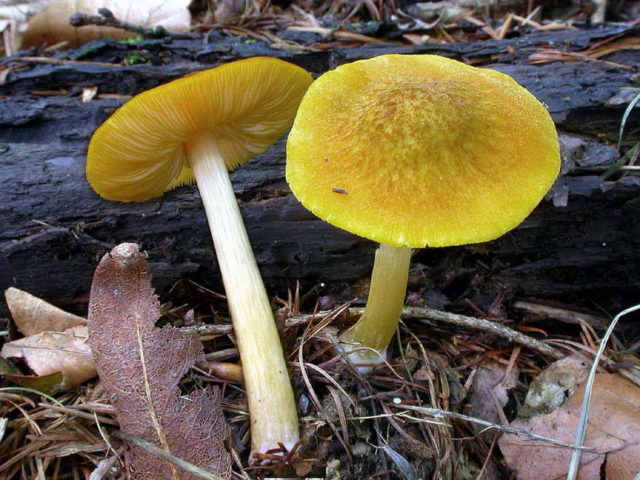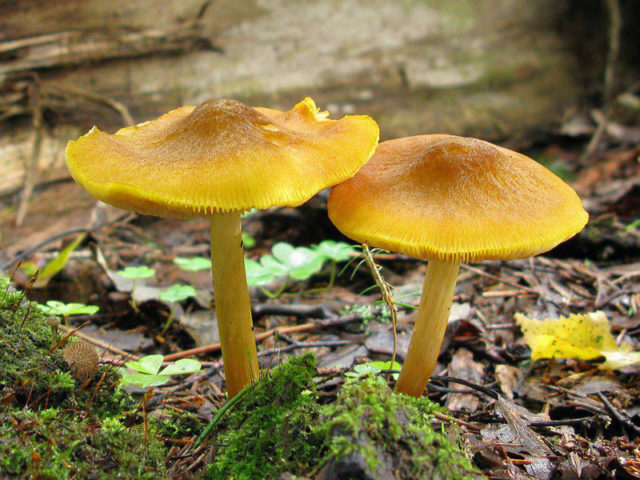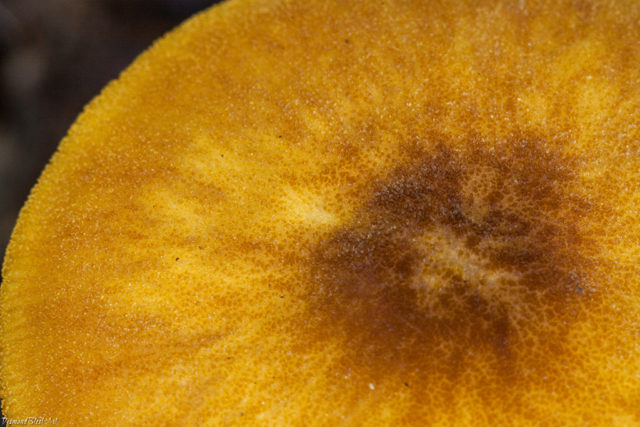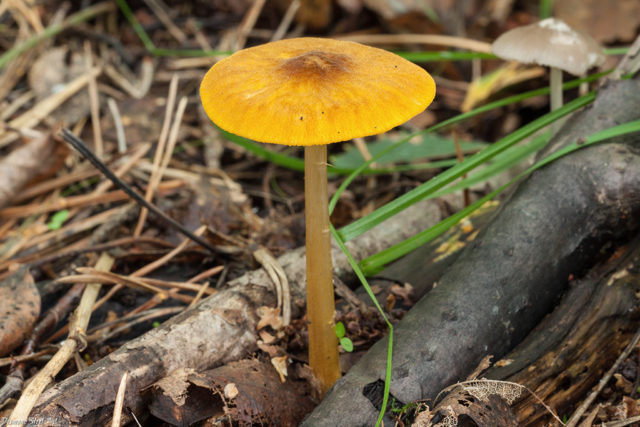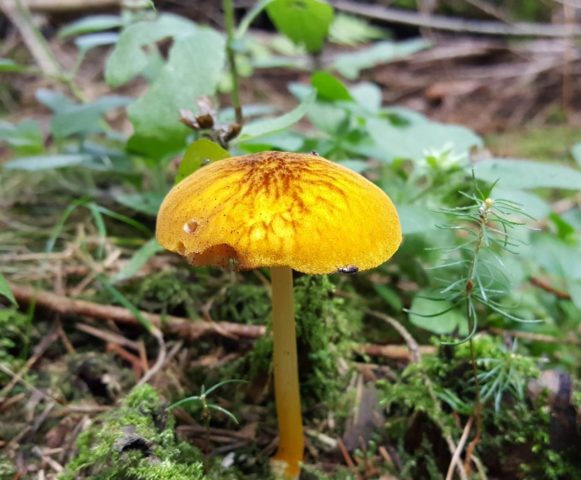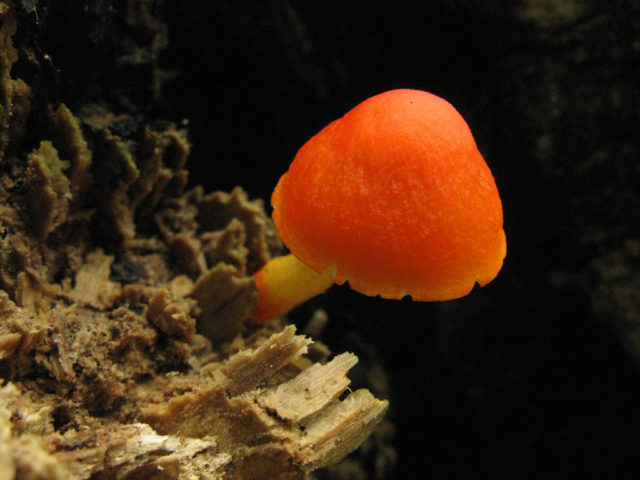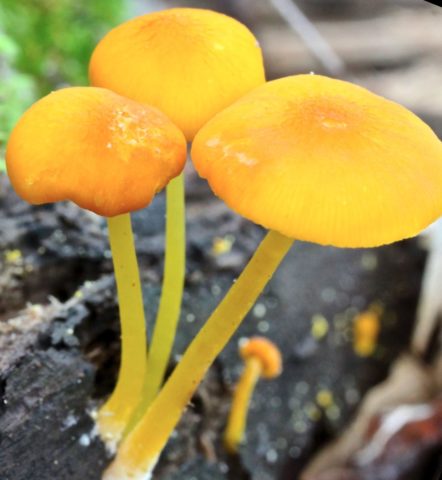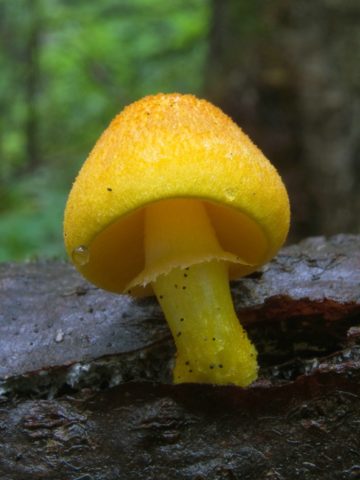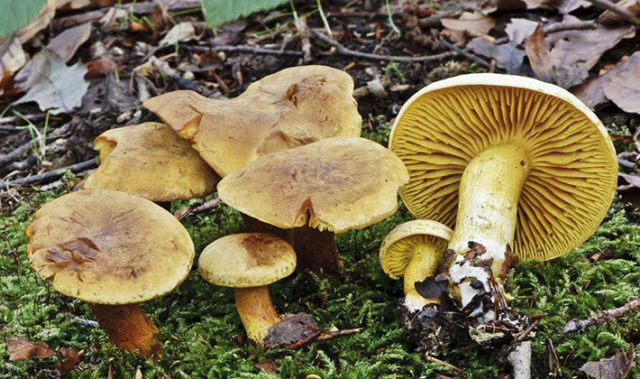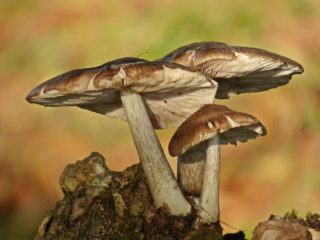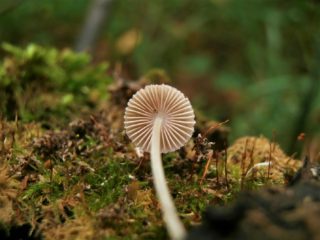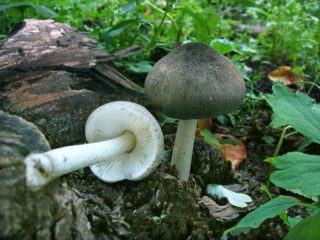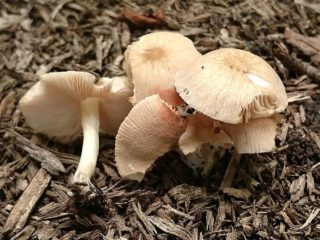Content
Plutey lion-yellow (Pluteus leoninus) is a rare representative of the Plutey genus of the Plutey family. It is also known as the lion's clown and the heapy clown. According to the mycological classification, it belongs to the class Agaricomycetes, the Agaric order. The lion's rogue is not very well known in the circle of mushroom pickers, so many, due to inexperience, bypass it, considering it a toadstool.
What does a lion-yellow rogue look like
The lion-yellow roach is a small mushroom of a bright color on a very thin stem. The flesh is dense, it can be salmon, golden or brown. The color of the inner part depends on the age of the fruiting body and the place where the mycelium grows. Light pink spore powder. The plates are frequent, loose and wide. At a young age they are white-pinkish, at a more mature age they are pink.
Description of the hat
The hat of the lion-yellow spit in the initial stage of growth has a bell-shaped shape. Then it becomes convex, and even later, prostrate. The cap of the mushroom is rather thin, ribbed at the edges, with a diameter of about 20-60 mm. In the center there may be a small tubercle with a pattern in the form of a mesh. The skin of the cap is matte, velvety, longitudinally striped, smooth to the touch. The color of the cap is bright yellow, brownish, yellowish brown and yellow honey.
Leg description
The stem of the lion-yellow spit is long and thin. Its thickness is about 5 mm, and its height is 50-80 mm. The leg is solid, fibrous, longitudinally striped, and has a cylindrical shape. Expands slightly towards the base, where a small tuber can sometimes form. It happens even, curved, occasionally twisted.
Where and how it grows
A lion-yellow pike is a saprophyte mushroom that grows on fallen trees, old decaying stumps, on wood residues (bark, branches) in the soil. It is quite rare on living trees. These mushrooms grow mainly in the European part of Russia, in the Samara region, as well as in the Primorsky Territory, Eastern and Western Siberia.
Place of growth of lion-yellow spit:
- deciduous forests (oak, beech, poplar, ash);
- mixed plantations (with a predominance of birch);
- coniferous forests (rare).
Fruiting lasts from mid-June to late October. The most massive growth is observed in July. Mostly they grow singly, very rarely in small groups.
Is the mushroom edible or not
The lion-yellow plyutey is a conditionally edible mushroom with low taste. The smell of the pulp is quite pleasant. You can use the lion's ropes for preparing the first and second courses, having previously boiled for at least 10-15 minutes. Mushrooms can also be dried and salted.
Doubles and their differences
Several types of spit are similar to the lion-yellow spit:
- Golden colored (Pluteus chrysophaeus) - a distinctive feature is the smaller size and the presence of brownish flowers.
- Orange-wrinkled (Pluteus aurantiorugosus) - is distinguished by the presence of an orange spot in the center of the cap and a rudimentary ring on the stem.
- Golden vein (Pluteus chrysophlebius) is a smaller mushroom, not velvety, with a different pattern in the center of the cap.
- Fenzl's Clown (Pluteus fenzlii) - a distinctive feature is the ring on the stem and the very bright color of the cap. The most yellow spit of all varieties of yellow spit.
Conclusion
The lion-yellow pike is a little-known mushroom, so its chemical composition and characteristics have practically not been studied. There is no reliable scientific data on the species. In the course of a few studies, no unique and beneficial properties have been identified, which would make it possible to recommend this type of mushroom for consumption.
